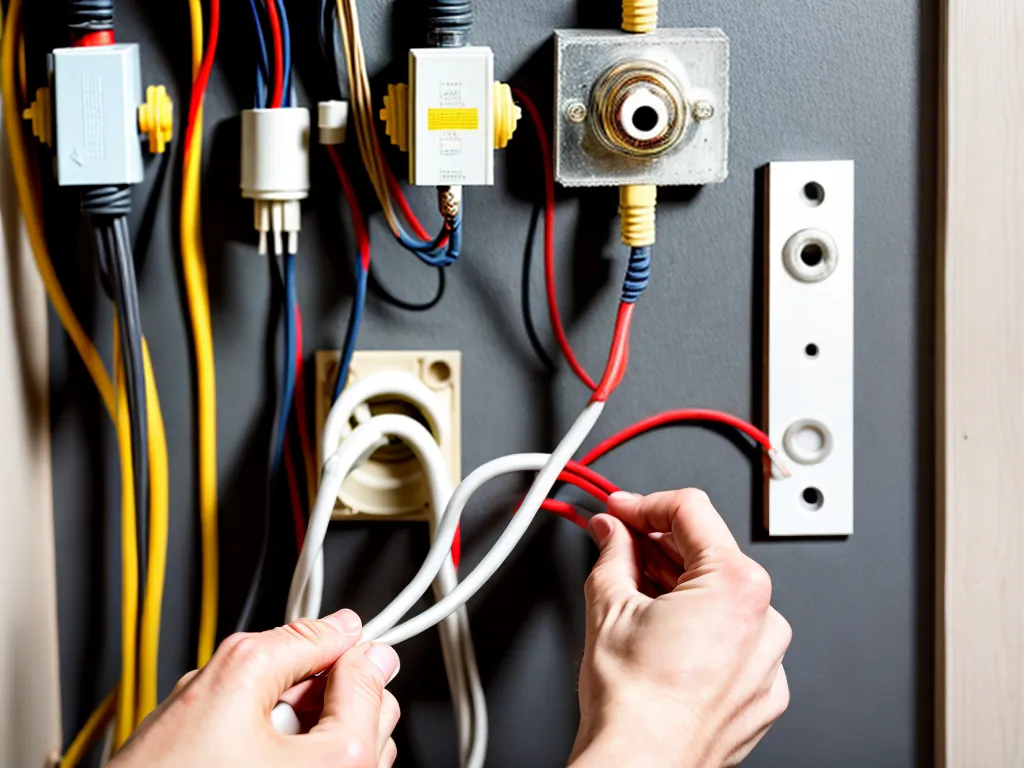
How to Replace Your Home's Knob and Tube Wiring
An Introduction to Knob and Tube Wiring
Knob and tube wiring was commonly installed in homes built before the 1940s. It features insulated wires that are run through open walls and ceilings, supported by ceramic knobs and tubes.
While knob and tube wiring was suitable for the electrical needs of early 20th century homes, it can be dangerous and insufficient for most homes today. The insulation breaks down over time, wires are often improperly spliced, and the system cannot handle the electric load of modern devices.
Replacing knob and tube wiring will make my home much safer and more functional. It will allow me to use modern appliances without worry and add new lighting and outlets wherever they are needed.
Dangers of Knob and Tube Wiring
Knob and tube wiring poses several dangers that make replacement urgent:
-
Fire hazard - The old, cracked insulation can expose wires to each other or combustible materials in walls and ceilings. This significantly raises the risk of an electrical fire.
-
Insufficient capacity - Knob and tube wires are usually 60 amp systems. Today's homes often have 200 amp panels or more. The wiring cannot handle the load of multiple modern devices running at once.
-
Lack of grounding - Knob and tube systems have no equipment grounding conductor. Ungrounded electrical systems can lead to shocks and damage to connected devices.
-
Insurance issues - Many insurance companies will not cover houses with knob and tube wiring, or charge a higher premium. Replacing it may lower my insurance costs.
Planning the Replacement Project
Replacing knob and tube wiring is a major project that requires planning and licensed electricians. Before starting, I need to:
-
Consult an electrician - Only licensed electricians should handle wiring projects. I'll meet with a few to discuss my needs and get quotes for the job.
-
Get a permit - My town requires permits for home rewiring. I'll have the electrician pull all required permits before starting.
-
Decide on scope - The electrician will assess my wiring and advise on my options: replacing some circuits or rewiring the entire home. My budget and needs will determine the scope.
-
Schedule electric shutdowns - The power will need to be safely turned off to sections of the home during the work. Outages will be coordinated with my schedule.
-
Remove obstructing insulation - Any modern insulation in walls with knob and tube will have to be removed before new wiring can be installed. I may choose to replace the insulation afterward.
What to Expect During the Rewiring Process
Once the planning is complete, I can expect the following process:
-
The electrician will remove any modern insulation that obstructs access to the old wiring.
-
Sections of knob and tube wiring will be disconnected and removed. The ceramic knobs and tubes will be taken out of the walls and ceilings.
-
New wires will be run through the open spaces and connected to new boxes and outlets.
-
For any sections that remain live during the work, the electrician will reroute the old wires to bypass areas where work is underway.
-
Once rewired sections are complete, the drywall will be patched, taped, mudded, and repainted.
-
The final step is connecting the new wiring to the main electrical panel and performing safety checks.
Costs of Replacement Projects
The cost to rewire a home depends on factors like:
- Home's square footage
- Number of circuits being replaced
- Accessibility of wiring runs
- Local electrician rates
According to HomeAdvisor's data, average costs fall in these ranges:
- Partial rewire (some circuits): $1000 - $2000
- Whole home rewire: $8000 - $15000
It's a major investment but pales in comparison to the risk of continuing to use unsafe, outdated wiring. I'm excited to feel at ease in a home with modern, grounded wiring suitable for today's electrical usage.